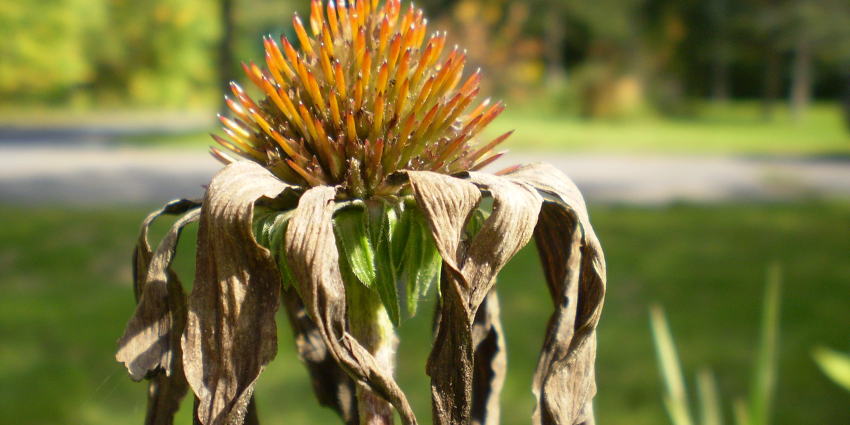We all try with the best intentions to make our plants live in the garden, but sometimes we make a few key mistakes.
Like pretty near every living thing, plants need food and water. But just like any other living thing, too much can be a bad thing. The only trick is, with plants, just the right amount can also be a bad thing. This may sound silly, but it really is true.
Let's talk about woody plants and perennials here. Annuals are a little different because of their short lifespan and don't need to live the winter months. You get a nice fancy looking perennial or shrub, or even a rose and you put it in the ground. You want to have this nice plant for a very long time so you make sure to do what you think is best.
- First mistake: getting rid of all the "bad" soil and putting in top soil or something else. Wait a second, isn't that a good thing? Well, the intentions are good, but the end result is probably not what you like. If you dig a hole in poor soil and replace it with all good soil, the roots of the plant never want to leave the good soil. That means it won't fully root into the ground properly. The correct thing to do is mix in some organic matter into your existing soil to create a buffer zone that the roots are willing to go through. Organic matter can be anything that either was alive or is derived from something alive - manure, compost, or peat moss. Peat moss is the least expensive and does a great job. It's also the safest to use if you're not sure how much to add since peat moss won't burn off young roots.
- Second mistake: forgetting bone meal. Bone meal is one of natures best examples of recycling and it's one of the first fertilziers discovered by humans - grave-robbers in fact. These ground up bones feed plant roots slowly to help them adjust to their new home. A medium handfull for shrubs, larger handfulls for trees. Adjust rates accordingly for perennials and annuals, but it helps all plants.
- Third mistake: the wrong fertilizer. This is probably the single most common mistake I hear. Somebody calls me in the spring with problems on the tree or shrub and we ask if it has been fertilizer. The answer is usually "yes" but with the wrong food. Miracle-Gro is the most common answer, though any fertilizer not specifically designed for young plants can very well burn the roots of young plants. Miracle-Gro does make a Quick Start fertilizer which can be used. Either that, or look for names like Plant Start or Transplanter. Never use an all purpose food or any other food for the first year. That's right, the first year. You can repeat the transplant fertilizer once every two weeks to develop those roots, after all, that's your foundation of the plant and the rest will follow if you have healthy roots.
- Forth mistake: lots of water. Too much water can be as bad as not enough water. Too much water can drown plants or start a chain reaction of root-rot which can be hard to stop. The "perfect" amount of water is actually slightly less than you would expect. The plant should get a little dry between watering, but the waterings should be thorough when they happen. The slight bit of dryness stimulates the plant to start making new roots to find water. If a plant always has enough water, you can end up with a root system that's perfectly happy to sit still and not grow. I have found this to happen most often with roses since people tend to baby them more.
Gardeners take care of plants all with the best of intentions, but care must be taken not to overcare for them. I suppose it would be similar to sheltering a child resulting in an adult who really isn't all that sure what to do when they enter the real world. A little care and thought will go a long way in the garden.

